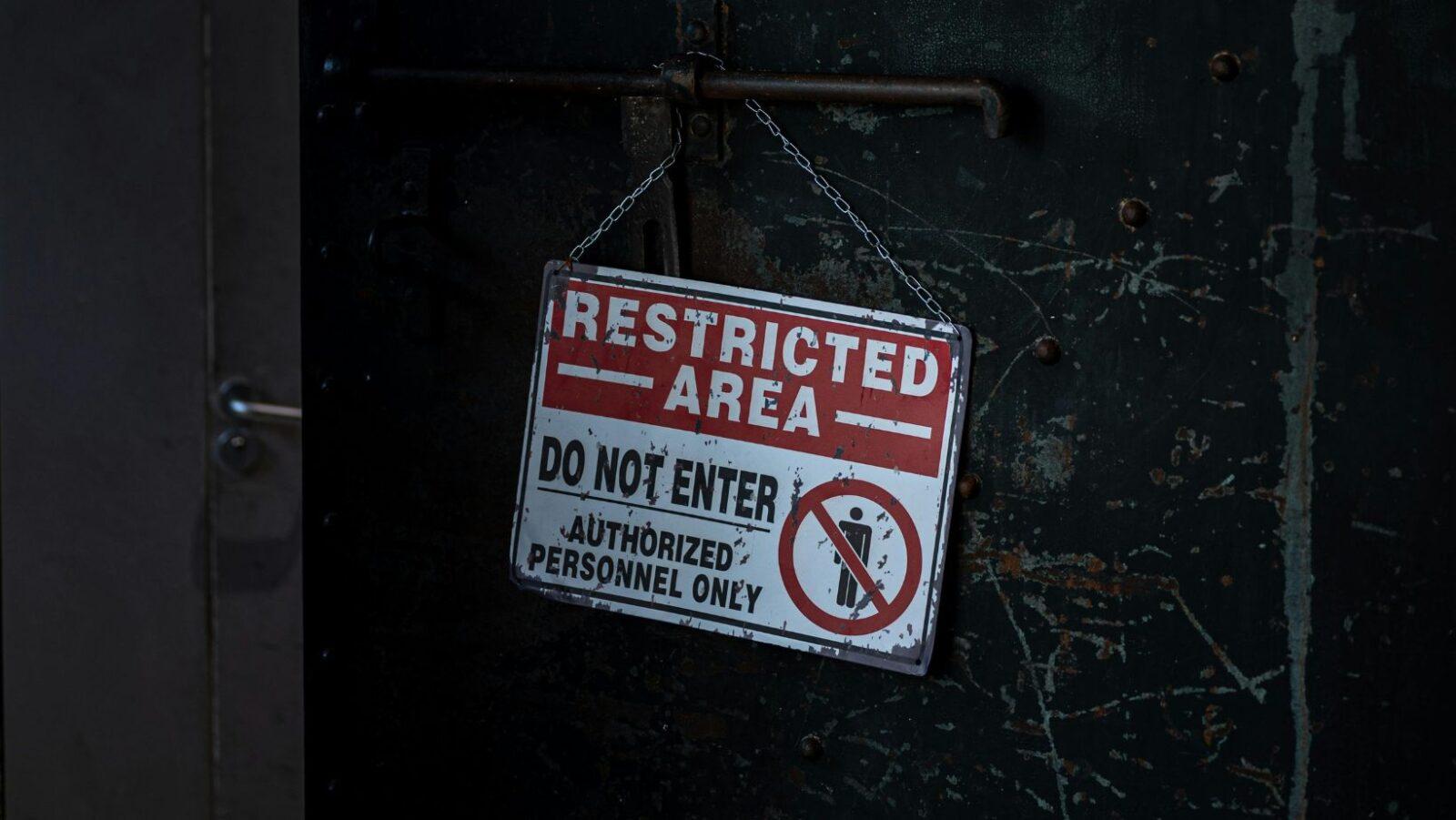
For Filipinos fortunate enough to have access to basic services, much of their daily existence depends on the consistency and reliability of such amenities. So when Typhoon Paeng hit Laguna in October 2022 and caused a nearly week-long water service interruption in Los Baños, it became “the straw that broke the camel’s back” for residents who had reportedly been enduring unreliable service from the town’s concessionaire, the Laguna Water District Aquatech Resources Corp. (LARC), even before the storm struck.
An official complaint was filed against LARC in November 2022. The issues raised included weak and inconsistent water service, late advisories about (and a lack of water rations during) service interruptions, poorly maintained pipes, and LARC’s allegedly dismal handling of consumer complaints. One resident even noted slimy, yellowish residue in their water containers.
Further scrutiny, however, uncovered an alarming health concern that, until that point, had remained unknown to the general public: There are high levels of arsenic in the water supply of at least two Laguna towns (Los Baños and Bay, with a combined population of 182,487 as of 2020) serviced by LARC—a problem that LARC was already made aware of years earlier, but somehow still remains unsolved to this day.
Trouble in the water
Arsenic occurs naturally in over 200 minerals, and is said to be the 53rd most abundant element in Earth’s crust. An element whose properties fall somewhere between metals and nonmetals, arsenic is crucial to many applications in the agriculture and mining industries, as well as in the manufacturing of glass, semiconductors, and wood preservatives. It is also one of the most widespread environmental toxic elements: Its particles can be found in the air, land, and water, and may enter the body through ingestion, inhalation, and, in some cases, even touch.
Inorganic arsenic (which has simple molecules that don’t contain carbon) is used in pesticides, occurs naturally in groundwater, and is harmful to humans, according to chemist and environmental scientist Kurt Solis. For starters, it can bind with sugar molecules, hindering the body’s capacity to absorb a crucial energy source. “Another form of arsenic attaches itself to the building blocks of protein we call amino acids,” Solis, a junior researcher at the Philippine Nuclear Research Institute (PNRI), told FlipScience in an interview. “When the amino acids with arsenic are assembled to form proteins (e.g., muscles, enzymes), they become irregular in shape and may not function properly, leading to mutations (cancer cell formation).”
Exposure to inorganic arsenic typically happens by drinking contaminated water. While most of it gets flushed out by the body in a matter of days, a trace amount may remain—and the slow buildup of highly toxic arsenic in the body can lead to serious health consequences within 5 to 15 years.
“One effect that can be easily observed is the formation of tiny bumps with greenish coloration on the palms, soles, and skin of the back and arms,” says Solis. Other signs of arsenic poisoning (arsenicosis) include abdominal pain, diarrhea, nausea and vomiting, abnormal heart rhythm (arrhythmia), and tingling in the digits.
Some of the health conditions linked to long-term arsenic exposure are diabetes, different types of cancer (with the strongest evidence pointing to skin, lung, and bladder cancer), respiratory illnesses, and developmental problems and mortality in infants. In fact, it might be easier to think about what arsenic poisoning won’t do to the body, as it affects virtually every important organ and system: the cardiovascular, endocrine, nervous, respiratory, and immune systems, as well as the liver, kidneys, bladder, and prostate gland (in people assigned male at birth).
Worse, as a water contaminant, arsenic is colorless, odorless, and tasteless—a truly stealthy assassin among the world’s most lethal poisons.
Under pressure
Experts say that approximately 140 million people across 70 countries have been drinking contaminated water with arsenic levels beyond 0.01 mg/L, the recommended limit of the World Health Organization (WHO). This is also the Maximum Allowable Limit (MAL) of arsenic stated in the Philippine National Standards for Drinking Water (PNSDW) of 2017.
Solis described the MAL as “an acceptable balance of health, scientific, and economic factors,” as going lower would mean increased costs. “Cell research determined our natural tolerance to arsenic exposure before bad health effects are observed,” explained Solis. “Ideally, the smaller the arsenic in water, the less chance for humans to develop diseases like cancer. However, our current arsenic removal and detection technology limits our capacity to control arsenic in water.”
In 2019, the Commission on Audit (COA) published its 2018 audit report of the Laguna Water District (LWD), the entity that co-established LARC in 2016 under a joint venture arrangement to function as “operator, contractor, and agent” for water supply distribution in Los Baños, Bay, Calauan, Victoria, and portions of Nagcarlan. The report contained findings from three third-party laboratories—the Department of Science and Technology (DOST), NRL, and CRL Environmental Corporation—that tested samples from 13 of LARC’s deep well pumping stations in Bay and Los Baños. They determined that most of the samples exceeded the MAL for arsenic, leading COA to recommend that management “conduct its own regular monitoring” of arsenic levels and “implement immediate remedial measures” for consumer safety.
Two years later, the next audit report revealed that LARC “was not able to meet the standards set for quality drinking-water.” In January of 2020, CRL tested 13 pumping stations in Bay and Laguna; 10 failed. In September of that year, they tested 14 stations; only four passed. (The lab also tested 3 stations in Calauan; all passed the arsenic test, but one failed the color quality assessment.)
COA’s 2022 report, the most recent LWD audit report on its website, indicated that at least six sampling points still failed the arsenic test. Recommendations to LARC included revising the water safety plan to include “a complete and comprehensive plan for the immediate removal of the arsenic content in Los Baños” with “specific timelines.”
In an email interview with FlipScience from June 2024, LARC stated: “Arsenic has been found in our water for decades and its level consistently passes the PNSDW.” The company also clarified that the PNSDW parameters were revised in 2017, changing the previous arsenic limit set by the 2007 guidelines (0.05 mg/L) to 0.01 mg/L.
FlipScience was unable to independently verify this claim due to the lack of publicly available arsenic test data from previous years. It’s worth noting, though, that while the 2007 PNSDW guidelines did set the limit at 0.05 mg/L, it also stated that “the maximum level shall be 0.01 mg/L” by 2010—six years before LARC started operating. Furthermore, in COA’s 2017 audit report, the agency gave LWD a rating of “Partially Implemented” when it came to monitoring the “Non-Revenue Water, New Service Connection, Water Quality, Monthly Data Sheet, [and] Daily Chlorine Dioxide of LARC.”
In deep water
According to Solis, the possible explanations behind arsenic-contaminated water depend on where the affected community’s water supply comes from. Surface water sources such as rivers, dams, and lakes can be contaminated due to human activities (e.g., mining, industrial waste, arsenic-based pesticides).
Groundwater sources, on the other hand, mix with arsenic in a different way. “Arsenic usually mixes with groundwater when the water deposits deep underground is stressed, meaning, the amount of water being pumped out is more than its ability to be replenished. In this stressed state, air from the surface can pass through the spaces underground. The rocks prefer oxygen more than arsenic, so it releases arsenic in exchange for oxygen. The released arsenic then goes to the remaining water, which is then pumped out.”
Solis suggested that the arsenic contamination in Bay and Los Baños may be attributed to both natural and human causes. Aside from the active volcanism in parts of Laguna (which are more likely to have higher-than-average arsenic in groundwater), he also noted the high arsenic concentrations in Laguna de Bay.
“It is natural that as the towns grew, the demand for groundwater also increased (domestic and for irrigation), and possibly to the point that average rainfall can no longer help recharge the groundwater supply,” said Solis. “To balance this, lake water started to drain into the groundwater supply, and the high arsenic in the lake may have mixed with groundwater. Unfortunately, a growing town located in areas near active volcanoes and mineralized (rich in precious metals like gold and copper) will most likely suffer from arsenic contamination sooner or later.”
Dr. Jabez Flores, senior lecturer at the University of the Philippines Open University, offered a similar take. “Laguna Lake is also contaminated with heavy metals such as arsenic,” said the environmental scientist, who is a Los Baños resident himself. “The reason for this is a combination of the volcanic nature of Laguna, the presence of industries and industrial waste, and agriculture which uses pesticides and fertilizers. All of these are affecting groundwater and the lake.”
Opening the floodgates
Flagging arsenic contamination is one thing, but fixing the problem is an entirely different matter. Boiling water won’t work; chlorine bleach disinfection and water softeners won’t be effective, either. Reverse osmosis filtration—technology that one can find in water refilling stations—can reduce arsenic levels, though research says this isn’t always the case.
Solis mentioned three potential courses of action. “One possible solution is to look at surface water as an alternative source of domestic water. Second, local officials can be stricter in giving permits to dig wells in areas known to have high arsenic, and they can advise the residents to avoid drinking water from artesian wells (poso). Pumping stations can be equipped with a series of filters to help reduce the number of contaminants in water.”
LARC, on the other hand, asserted that they had been doing “a lot of pilot testing in some of [their] pump stations” since 2018. “Unfortunately, of all the technologies tested, none of [them] passed.” When FlipScience asked about the specific kinds of technology they tried and why they didn’t work, LARC stated that due to a confidentiality agreement with the suppliers, information could not be released. “However, once a trial proves successful and we decide to adopt these technologies for our facilities, we will be pleased to share the details with you,” assured the company.
Dr. Agnes Rola, Professor Emeritus at the University of the Philippines Los Baños, told FlipScience that bioremediation (the use of microorganisms to remove environmental contaminants) exists as a solution, but the challenge lies in identifying which groundwater spaces register high arsenic levels. Fortunately, locally made innovations are making the process easier. “PNRI now develops sensors to determine the arsenic levels in situ. No need for labs.”
The agricultural economist and her team coordinated with the local government units (LGUs) of Benguet and Zambales to conduct their arsenic research project. They originally planned to work in Laguna, and even talked to Los Baños officials in the hopes of pursuing the project there. “The mayor was very supportive, but there were some impediments beyond the project’s control,” Rola shared. “So we went to Benguet and Zambales, whose local governments are getting excited about the future results.” According to Rola, Los Baños could be a study site for the project’s second phase.
As for accurately gauging the full extent of the affected residents’ long-term arsenic exposure, it would not be possible without collecting data first. “I haven’t heard of arsenic poisoning here yet,” said Flores. “But it is hard to determine if any of the diseases here are related to arsenic poisoning.”
For this purpose, there may be merit in gathering and examining medical data from Los Baños and Bay (e.g., disease rates, hospitalizations) from the past decade to identify any trends—bearing in mind, of course, that correlation does not imply causation. “We are doing this now in Benguet and Zambales,” said Rolas. “Sayang, ang LB (Los Baños) sana ang aming first priority.” [“It’s a shame, LB could have been our first priority.”]
Heads above water
In an interview with UP Rural High School’s official student publication, The Ruralite, Flores said that the high arsenic levels in the water supply of Bay and Los Baños represent both an environmental issue (“because it is a contamination [in our] natural environment”) and a public health issue (“because that contamination causes illnesses”).
Earlier this year, impassioned voices on social media—including Flores, who would regularly post updates and links about the arsenic contamination issue—helped bring more attention to the water problem in Bay and Los Baños. “Right now, I am just promoting some things we can do to lessen the impact of arsenic. Things like rainwater harvesting, reverse osmosis filtration systems, and water testing and analysis.”
On May 30, 2024, the local government of Bay filed a formal complaint against LARC, its sole water concessionaire, before the Local Water Utilities Administration (LWUA). A day later, a resident started a Change.org petition demanding better water service from LARC, listing many of the issues that had already been brought up in the 2022 complaint. As of this writing, the petition has gathered 3,232 signatures.
Sadly, even after this online uproar, it seems like things are still moving at a glacial pace.
In the aforementioned June interview, LARC cited its active membership in the Los Banos Water Quality Monitoring Committee (“where the water quality issues are continuously being monitored and reported”) as part of its action plan. They also advised against drinking tap water as a temporary safety measure, while assuring residents that they are “still sourcing other technologies, conducting pilot testings, and continuously [evaluating] them” in order to find a solution that’s both right and “reasonably economical.”
As of press time, LARC has not responded to FlipScience’s request for an update regarding the situation and what has been done to address it. For now, all that Flores and the other affected citizens can do is wait—and adjust.
“We take water for granted, but now we have to be more vigilant,” stated Flores, who revealed that during the pandemic and before they even found out about the arsenic contamination, his family purchased an IVO water filter for their tap to reduce their dependence on purified water. “We also noticed around that time that the water was turning orange. But this was because of the rusty pipes, a separate but related issue.”
Since 2022, however, they have been avoiding using tap water for drinking and cooking. Now, they rely on purified water delivery services, as well as rainwater harvesters for watering their plants. These are facilities that not everyone can afford; band-aid solutions for a longstanding problem that should not have been the consumers’ onus in the first place.
“I feel bothered and frustrated,” lamented Flores. “Water contamination should be in the headlines. Water is life.”
References
- https://cpaf.uplb.edu.ph/cpaf-updates/cpaf-through-dip-lab-conducts-meeting-on-arsenic-in-groundwater-in-los-banos-laguna/
- https://larc.com.ph/what-we-do/https://lbtimes.ph/2022/11/07/reklamo-ng-mga-konsyumer-ng-larc-iniharap-sa-isang-pulong/
- https://peerj.com/articles/943.pdf
- https://www.atsdr.cdc.gov/csem/arsenic/what_routes.html
- https://www.coa.gov.ph/wpfd_file/laguna-water-district-annual-audit-report-2018/
- https://www.coa.gov.ph/wpfd_file/laguna-water-district-laguna-annual-audit-report-2020/
- https://www.coa.gov.ph/wpfd_file/laguna-water-district-laguna-annual-audit-report-2022/
- https://www.coa.gov.ph/wpfd_file/laguna-water-district-laguna-executive-summary-2022/
- https://www.facebook.com/LGUBayLaguna/posts/767808272196022?ref=embed_post
- https://www.facebook.com/likha.cuevas/posts/pfbid0ug9ivPTcia8r5CgDhaGiRXfzemH7Lv8rMnWoBPdMnPETgnQg12bEfLjbu3VY7utrl
- https://www.facebook.com/likha.cuevas/posts/pfbid02SUq1c2vWquaJwvgnzNWnjNJGFbLMr73uznqRHvnRk3Ww5DKm1MuRhQVtDGv2wiR5l
- https://www.facebook.com/uprhsTR/posts/pfbid0qGAPdLMtcuphcUkVS77EkVp5Xk2itGjt2gnoUp4y1bjyubVAhyppKotgtvyVhJB9l
- https://www.health.state.mn.us/communities/environment/water/contaminants/arsenic.html
- https://www.mcgill.ca/oss/article/health/what-difference-between-organic-and-inorganic-arsenic
- https://www.rappler.com/philippines/weather/severe-tropical-storm-paeng-pagasa-forecast-october-29-2022-5pm/
- https://www.rappler.com/philippines/luzon/bay-laguna-files-complaint-water-firm/
- https://www.sciencedirect.com/science/article/abs/pii/S0039914002002680
- https://www.sciencedirect.com/science/article/abs/pii/S0166526X19300194
- https://www.who.int/news-room/fact-sheets/detail/arsenic
- https://www.youtube.com/live/q1ck8mNkPpc
Author: Mikael Angelo Francisco
Bitten by the science writing bug, Mikael has years of writing and editorial experience under his belt. As the editor-in-chief of FlipScience, Mikael has sworn to help make science more fun and interesting for geeky readers and casual audiences alike.






